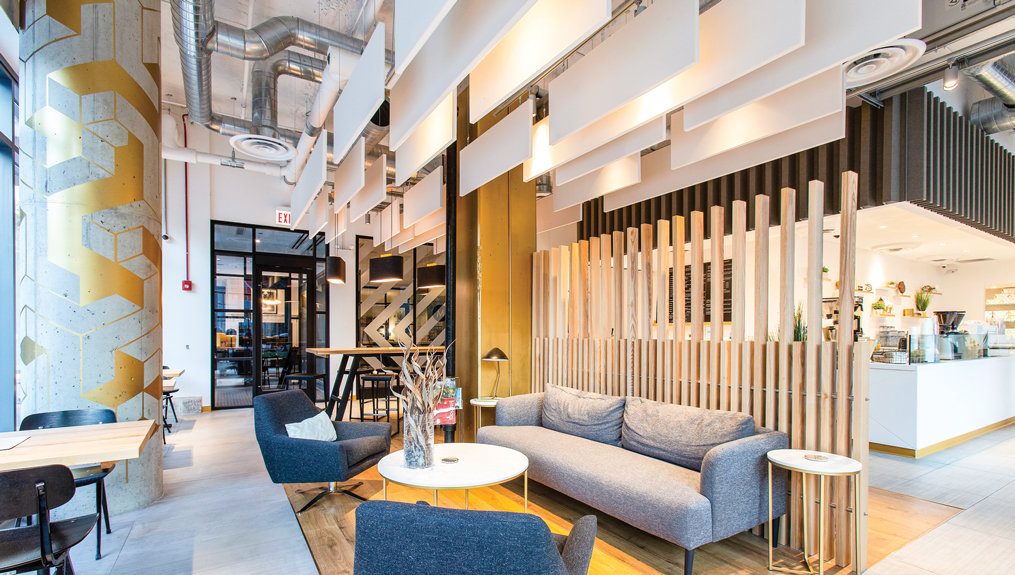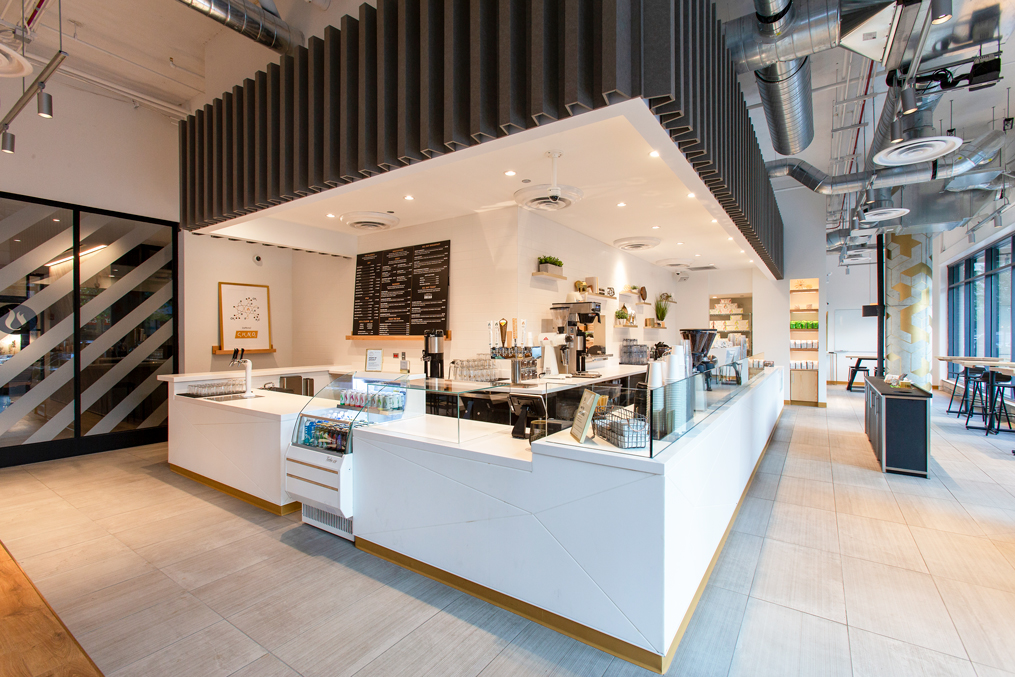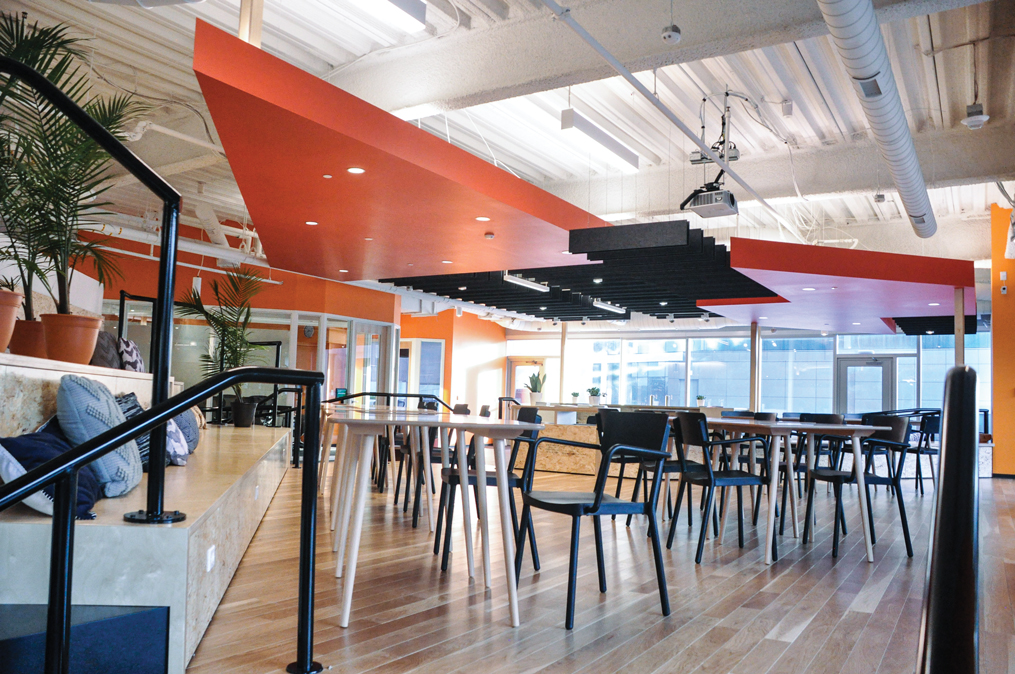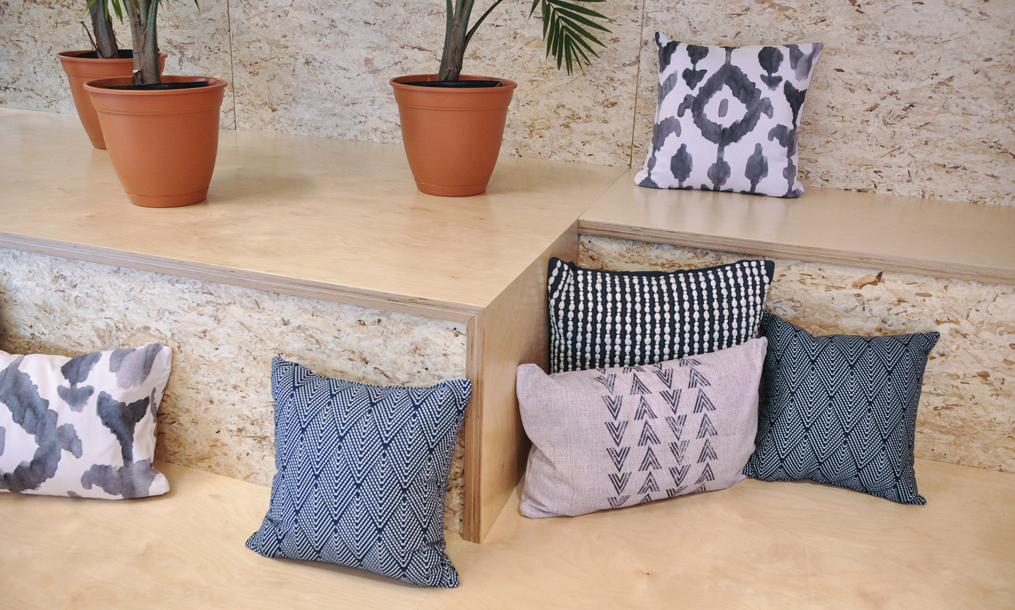Cafés are versatile spaces where people come to catch up with old friends, meet a date, hold a business meeting, work solo, and relax over coffee and tea. While cafés certainly look like the ideal spot for any of these purposes, how they sound can tell a whole different story.
Modern design can sometimes mean the acoustics of the environment disrupt the people trying to enjoy the space. High ceilings, exposed brick, and bare metalwork create a chic, trendy vibe favored by many cafés—but that can easily translate into a noisy environment. The bare-bones aesthetic offers little to no sound absorption, and customers find themselves straining to hear one another (and their own thoughts) over the mingled sounds of coffee being made, music, and competing conversations.
How can café owners get a handle on the acoustics of their space and improve their customers’ experience?
Cafés are versatile spaces where people come to catch up with old friends, meet a date, hold a business meeting, work solo, and relax over coffee and tea. While cafés certainly look like the ideal spot for any of these purposes, how they sound can tell a whole different story.
Modern design can sometimes mean the acoustics of the environment disrupt the people trying to enjoy the space. High ceilings, exposed brick, and bare metalwork create a chic, trendy vibe favored by many cafés—but that can easily translate into a noisy environment. The bare-bones aesthetic offers little to no sound absorption, and customers find themselves straining to hear one another (and their own thoughts) over the mingled sounds of coffee being made, music, and competing conversations.
How can café owners get a handle on the acoustics of their space and improve their customers’ experience?
Why Acoustics Matter
Working daily in a café may make café owners and employees immune to the noise and how it carries around the space, but customers are taking notice. People have begun using the SoundPrint app as a decibel meter for venues like restaurants, bars, and cafés. The crowdsourced app ranks venues as “quiet,” “moderate,” “loud,” or “very loud,” and users can search for venues around them based on noise level
“It is kind of like Yelp for noise,” says founder Gregory Scott. SoundPrint, which now has approximately 55,000 users and 80,000 submissions, was born out of Scott’s personal experience living in New York City and trying to date as someone with hearing loss. He would try to Google quieter venues to find places that would allow him to better hear and connect with another person, but finding somewhere was a hit-or-miss experience.
Since developing the app, Scott has found it difficult for people to subjectively determine how noisy a spot is because high noise levels have increasingly become the default. “Typically, people are very inaccurate in assessing noise levels because [venues] have gotten so loud,” he says. “People have a hard time deciphering what a safer noise level is.”
Venue managers and owners can use a decibel meter or an option like SoundPrint to understand the actual noise levels of their spaces. Just because a venue is noisy doesn’t mean it has to stay that way: SoundPrint is also working to connect spaces with suppliers, designers, and consultants that can help optimize acoustics.
Sound Design from the Ground Up
Café design is about engaging the senses. Owners and managers want people to love how their coffee, tea, and food taste, in addition to liking the look of the space and feeling comfortable enough to linger over their cups.
“The auditory sense particularly has a big impact,” says Sidi Gomes, principal designer at Cambridge Innovation Center (CIC). “The reason it is not weighted as much as its visual counterpart…it leaves its mark at an almost subconscious level, so it is easy to forget to design for it.”
Cafés that have yet to open their doors can incorporate sound design into initial design plans, ensuring pleasant acoustics are a part of its aesthetic from the beginning. As part of a larger project, Gomes helped design a café (Venture Café) for the CIC Design Studio space. He incorporated elements like acoustic spray on the ceiling, hanging baffles, and areas for reflected sound to escape into the café design.
“At this point, [acoustics are] ingrained in my design thinking and process, so I just do it from the get-go since it is a crucial design element,” he says. Venues taking a DIY approach to designing their space can research and incorporate acoustic solutions, while those hiring a designer can ensure acoustics are considered part of the overall process. “You just need to be able to describe the type of space you want well, and then [professional designers] should be able to help you put in the right elements to achieve them,” says Gomes.
Acoustic Solutions
Cafés are not libraries: There is no expectation of complete silence or demands that patrons talk in hushed whispers. However, noise levels can be managed so people can comfortably hear one another and concentrate. New and existing cafés can use various acoustic solutions to manage sound better.
- Décor. While the clean lines and stark aesthetics of modern style can be appealing, softer elements can create a helpful balance. Pieces of décor like rugs, plants, and drapes can blend with a café’s overall sense of style while also offering a measure of sound absorption.
- Furniture choice. Many elements of a café’s design can naturally help with sound absorption and better acoustics. Consider cushioned seating or adding pillows to your wooden or metal chairs. “Soft furnishings such as banquet seating, drapery…can help manage and diffuse sound to improve the diner experience,” says Jason Bird, the founder and creative/managing director of furniture and lighting manufacturer Luxxbox.
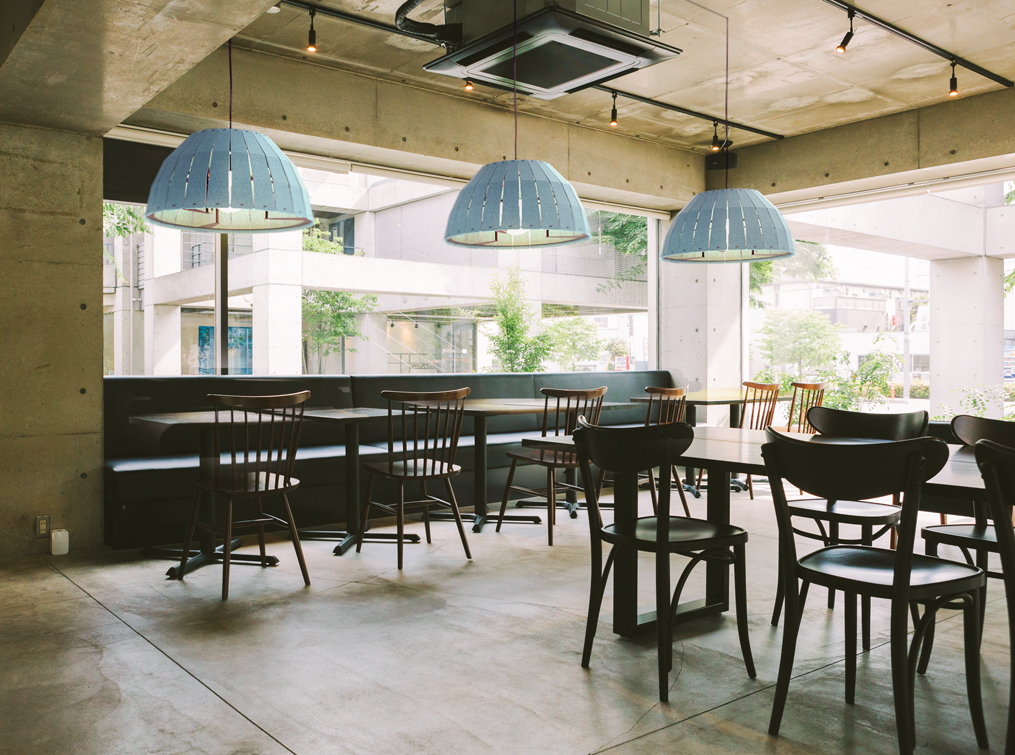
- Lighting. Improving café acoustics does not necessarily require an exhaustive redesign of your space; some simple elements can significantly affect your business with minimal disruption. “Installing acoustic lighting and wall treatments is one of the quickest and most economical ways to address acoustics in noisy restaurants and cafés, as it does not require the venue to be closed for long periods, affecting cash flow,” says Bird.
- Baffles and wall treatments. Making changes to improve acoustics does not have to come at the cost of visual design. Acoustic solutions from eco-friendly design materials company Kirei have been incorporated into spaces like CIC’s Venture Café in Philadelphia and Limitless Coffee & Tea in Chicago. “Look at the new acoustic design elements—they can knock down noise or shape the sound profile without sticking out or detracting from the space,” says John Stein, president of Kirei. “Wall art or ceiling clouds and baffles or other shapes can actually enhance the visual look as well as capture sound.”
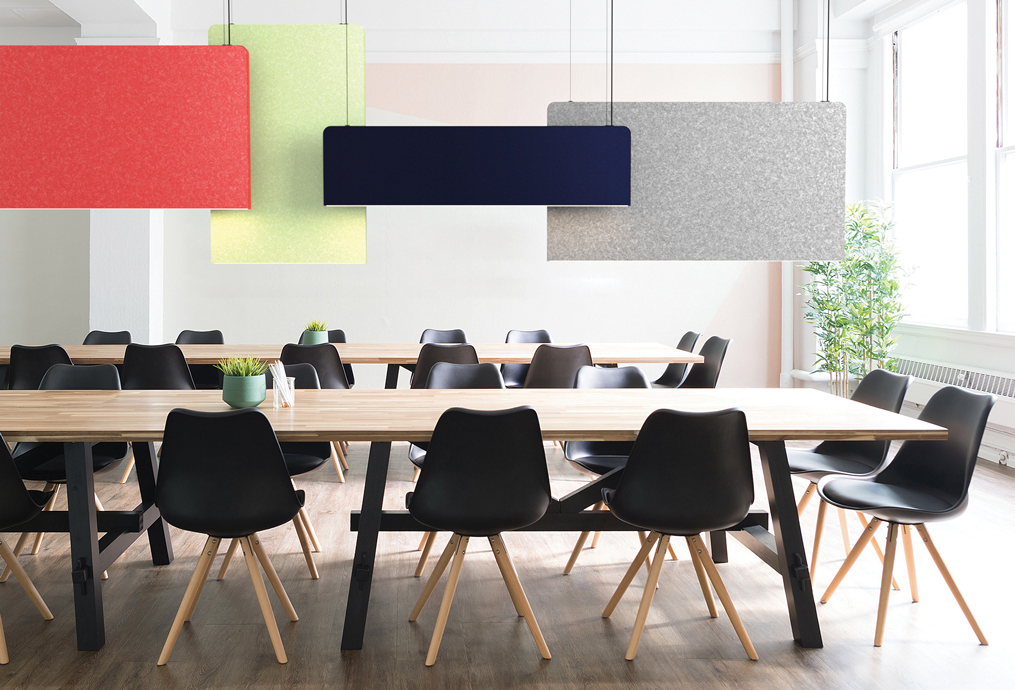
- Noise management. Acoustics isn’t solely about cutting down the amount of noise—it’s also about managing how that noise is projected in the space. Are the speakers playing music directly above the tables where people sit and talk? Is the espresso machine in an open area? According to Scott, you can move the noisier elements away from customers or add acoustic panels to improve sound absorption.
Acoustics matter because they are a vital part of the customer experience. Take a moment to stop and listen to the noise in your café: Is there the warm, welcoming buzz of a busy space, or does it verge on overwhelming? Some simple design choices could change how sound shapes your space’s vibe and overall experience.
Cover photo courtesy of ARCO/Murray. This article was originally published on October 16, 2019 and has been updated to meet Fresh Cup’s current editorial standards.



